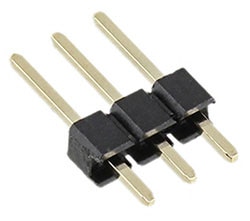Hall Effect Sensor Basics
The Hall Effect is a phenomenon that was discovered by Edwin Hall in 1879. He noticed that when current is flowing through a conductor and exposed to a magnetic field, voltage will be present perpendicular to the current and the magnetic field. The discovery of this effect gave us an easy way to detect magnetic fields.

We use this effect today to sense proximity, position, current, rotational speed, and also for switching applications. Hall Effect Sensors have many pros to using them. They are solid state, which means there’s no contact bounce, they have a longer lifespan, and can be used in high-speed applications. They can also be used in severe conditions, with a lower price point than a mechanical switch.

The image above is one example of a common Hall Effect Sensor application. In this example, a Hall Effect Sensor is placed between a magnet and the teeth on the gear of a car’s axle. Every time a tooth passes by, the magnetic field fluctuates and triggers the sensor. This is used to calculate speed and also help traction control systems determine if the wheels are rotating in sync.
This effect can also be used to determine proximity or position based on the strength of the magnetic field, as a switch, and for current sensing. Hall Effect Sensors are an inexpensive and effective solution for many applications.

Have questions or comments? Continue the conversation on TechForum, DigiKey's online community and technical resource.
Visit TechForum












